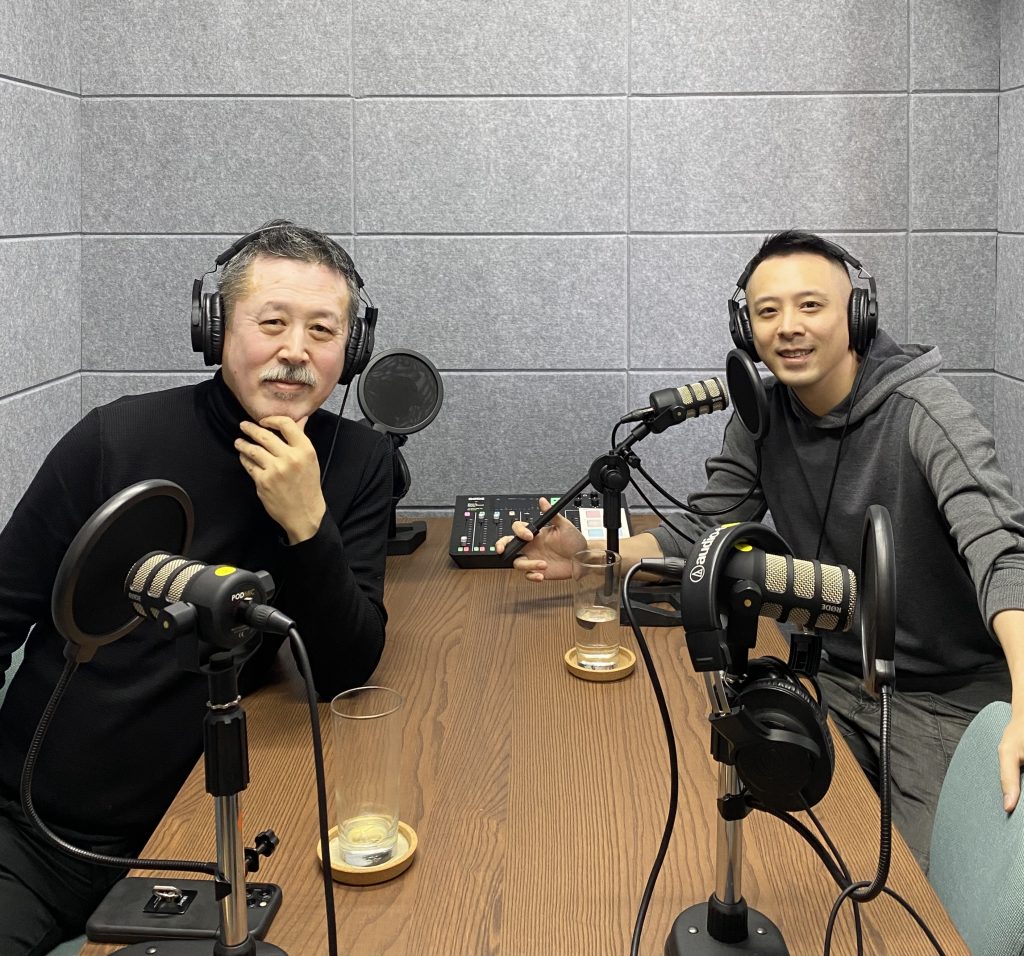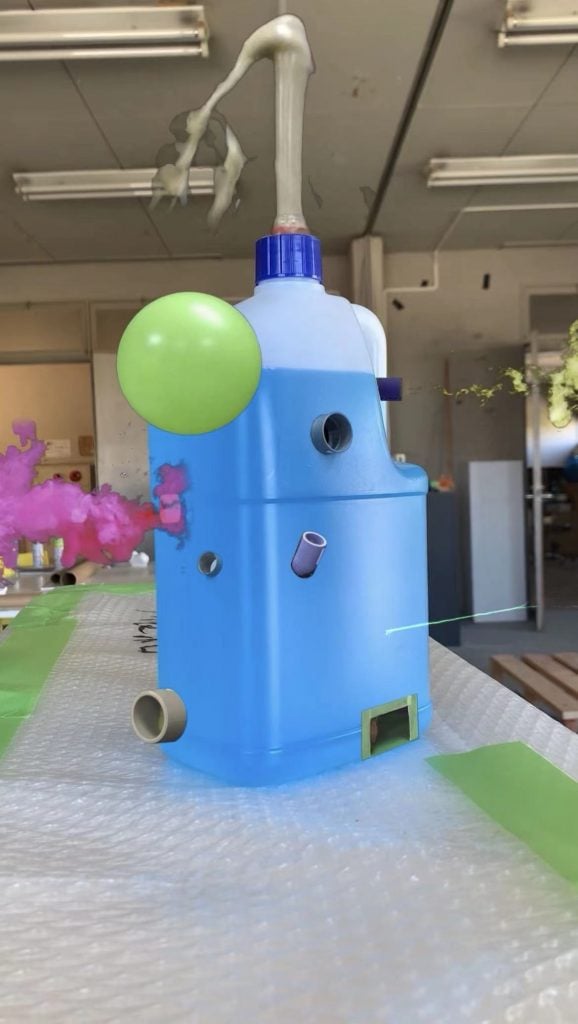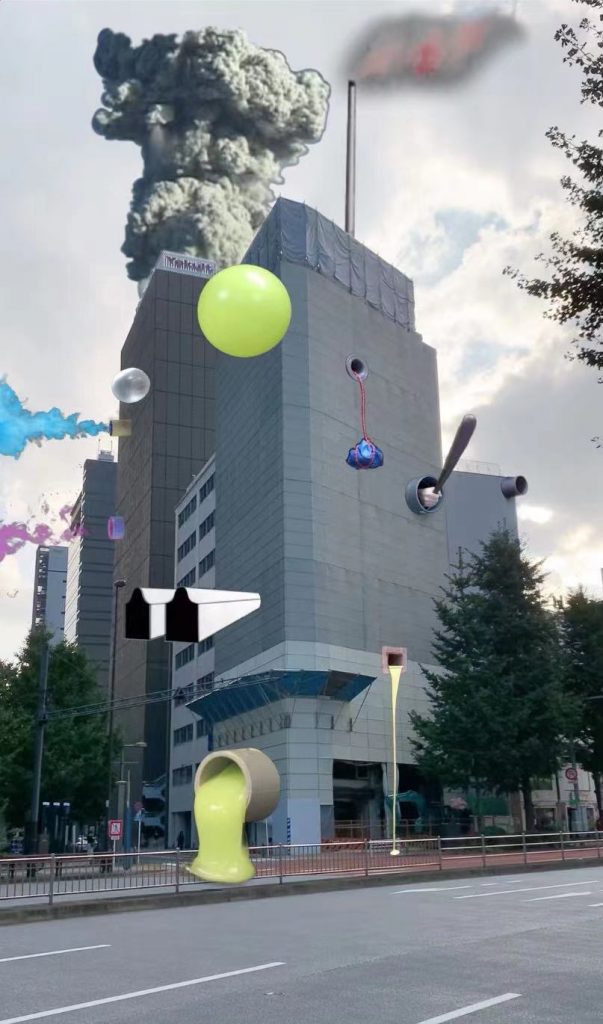Buyer's Guide
A Father-and-Son Duo at the Forefront of Taipei’s Art-Collecting Scene Explain Why They’ve Added NFTs to Their Portfolio
These two avid Taiwanese collectors are making moves in the metaverse.

These two avid Taiwanese collectors are making moves in the metaverse.

Jiayin Chen

As an island with a unique history of political and cultural influences, Taiwan is known for its strong buying power in the art market. The tradition of collection-building is so entrenched that even 30 years after its peak as Asia’s most important art-market hub, the island retains some of the most powerful collecting groups in the world.
As Robin Peckham, the co-director of the Taipei Dangdai fair, noted: “It’s been apparent for a long time that Taiwanese collectors are a major force in the Asian art market in general, responsible for a lot of the volume in the auction market in particular. But what’s been changing over the past couple years is the emergence of a new generation taking over their family collections that is very focused on working with artists and galleries in the primary market. As these new players mature and establish solid positions in the art world through museums, foundations, and other forms of public access to their collections, there’s a real potential for contemporary art to become a major part of life in Taipei.”
Nothing is more contemporary in art these days than NFTs. In 2021, as JPEG collections like CryptoPunks and Bored Apes competed for auction records at major auction houses, these young scions of elite Taiwanese families entered the blockchain collectible market with gusto. To learn more, we spoke to father-and-son collecting duo Simon and Raymond Wu. Simon Wu is the founder and principle of iDA Workplace, a design agency that boasts a slew of international corporate clients, from Chanel to Tiktok’s parent company ByteDance. Simon’s son, Raymond Wu, is a professional poker player, podcaster, and a full-time cryptocurrency and NFT investor.
We spoke to Simon and Raymond Wu about their respective journeys into art and NFTs, and how they envision the future of this new frontier.

Screen capture of Teppei Kaneuji’s Tower (NFT/Bottle of Washer Fluid). Courtesy of SOYL.
Jiayin Chen: Simon, tell us about your collection. What attracted you to contemporary art?
Simon Wu: It’s a long and ongoing journey! I have lived in Shanghai for the past 22 years, where I run an interior architecture firm, working with multinational corporations, Chinese state-owned enterprises, and the private sector. Due to my profession, I am constantly immersed in design and art. My interest in photography leads me to envision from different perspectives.
A little over a decade ago, on a good friend’s recommendation, I paid a visit to the Venice Biennale and Documenta in Kassel, which really opened my eyes to the art world. I was fascinated by the ways of contemporary art expression, and it has inspired my philosophy towards design and life thereafter.
In 2012, I started buying a few art pieces: mainly ones I just liked, without much consideration for their potential value. By visiting galleries, museums, and art events, and gaining expertise through lots of readings, I eventually landed on Asian and Chinese contemporary art as my main interest. My collection covers everything from paintings and photographs to video art to sculpture and installation art. The works themselves range from mature artists from the 1970s and the 1980s to young, emerging talents. What’s exciting is to see people I have collected, like Japanese artist Teppei Kaneuji, moving into the NFT space. I was interested right away in his drop on the SOYL platform.
JC: Raymond, you had an interesting career path prior to crypto and NFTs. Tell me about your story.
Raymond Wu: I was a professional poker player for the last 16 years. I traveled the globe to compete in tournaments and played in the top cash games online daily. I was also a Greater China ambassador for the biggest poker site in the world, Pokerstars, for six years. Due to many of my fellow players being involved in crypto, I ventured into the space casually in 2017, and more seriously in 2020. I started a community-based NFT project, FOMO Dog Club, with a fellow poker friend, Ryan. I am now a full-time investor and entrepreneur in the crypto space.
JC: Do you see any similarities between poker and crypto trading?
RW: Definitely. It’s similar in that both are about understanding human behavior and psychology, and both are about constant and instant decision-making. If you’re day trading, your every decision immediately has a consequence. Both poker and crypto trading are online-based activities, so the setup was also familiar to me.
JC: How did you each make the leap from collecting art to collecting NFTs? What is your view on NFTs in the long term?
SW: Raymond and I always exchange ideas and values to learn from each other. Whenever he has a challenge or an idea, he always comes to me to talk. Back in 2020, he came to me quite curious about NFTs, but confused about the concept. This rang my bell right away, as one of my friends had been involved in the space for the past few years. I linked them up in a chat room, and through my friend’s explanation, it opened our eyes to a new territory.
As I looked further into the ecosystem, I realized that NFTs expressed as art are only one of the many possible iterations. NFTs could apply to anything in the future to prove digital scarcity. All of the data can be recorded and all info becomes transparent to collectors. This is definitely a positive point in my view.
RW: I first heard about NFTs in late 2020 but brushed it off as another short-term hype. It wasn’t until I spoke to Simon’s friend that I became more intrigued. I started to research more on this subject and quickly realized that it was a technological innovation, with digital art simply the first format. People confuse NFTs with digital art, but an NFT is actually a technology that solves the problem of digital scarcity. I think in five to 10 years it will be widely adopted in many use cases beyond digital art.

Screen capture of Teppei Kaneuji’s Tower (NFT/Building #2). Courtesy of SOYL.
You are both involved in the metaverse, and recently bought some land in Sandbox and Decentraland. How do you see the idea of the virtual world playing out?
RW: I think we’re still some time away from the real open-world metaverse being rolled out. I always like to have some skin in the game if I want to learn about a new space. Metaverse lands could certainly flop, but the concept is intriguing. The idea of having remote meetings in non-physically-bound geographic locations is exciting to me. Simon is at the forefront of this by designing FOMO Dog Club’s first Sandbox theme park!
SW: I was initially wowed by the concept of the metaverse, and it took me a few months of learning and understanding to finally accept the concept. It’s not easy for people in my generation. Once I understood the ideas of the metaverse, NFTs, and cryptocurrency, I came to agree that anything can happen in the virtual world.
Through my research, I’ve learned that some of my clients are buying virtual lands and exploring opportunities in the metaverse. I don’t know what will happen next, but currently I am working with a team to build Raymond’s FOMO Dog Club’s building.
JC: We are essentially in a bear market right now, meaning that crypto prices are falling, which encourages selling. What do you have to say?
RW: Bear markets are inherently normal in all forms of investing, but crypto bears are tougher to swallow due to their uncertainty, greater length, and sharper price actions. Trying to time the market to buy at the lowest point or sell at the top is a fool’s game. One should focus their attention on how exposed they are with regards to their own personal net worth and their risk tolerance. Having a diversified real-world asset portfolio that also includes real estate, stocks, and cash is going to significantly help your mental game during times of uncertainty. Staying alive in the game of cryptocurrency is going to be the key factor of long-term success.
SW: When you have a strong belief that the new ecosystem has value and potential, you should consider the current situation as an opportunity. Judging from history, we learn that any breakthrough concept always faces tremendous challenges along the way. I would suggest sticking to the destination once it is set, regardless of the turbulence that most likely will come along.